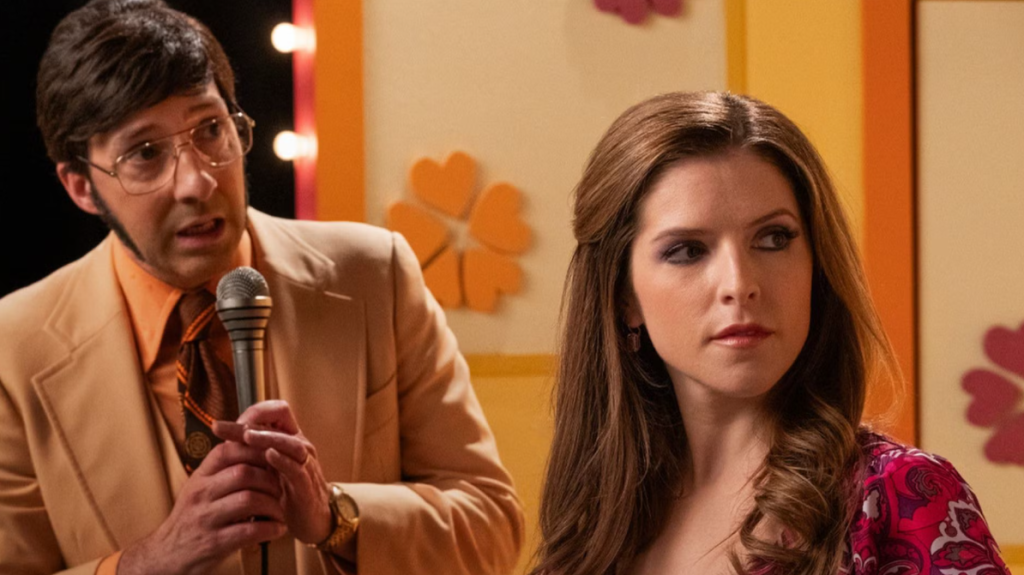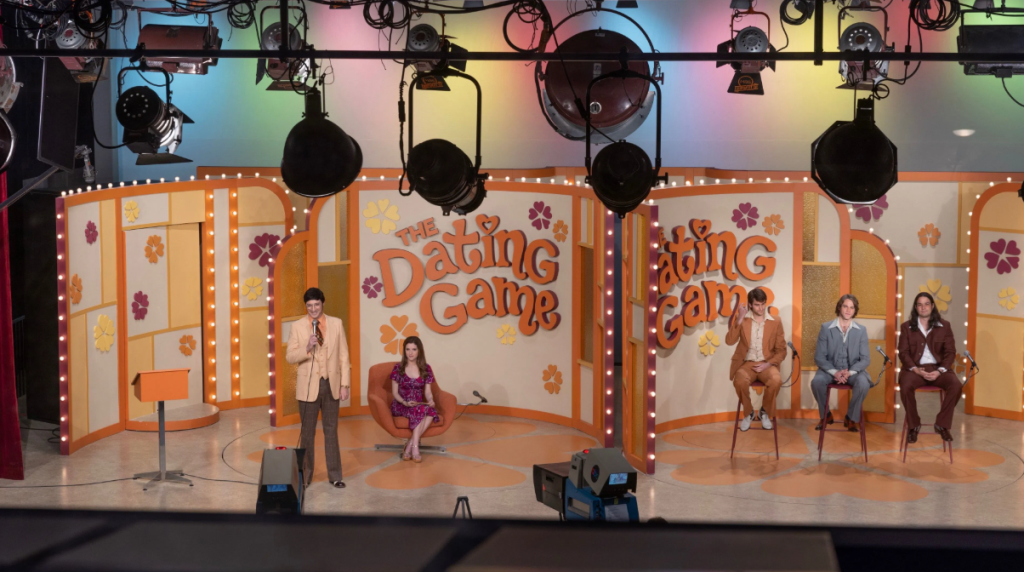Inside Anna Kendrick’s Chilling Directorial Debut ‘Woman of the Hour’
“Do you believe in love at first sight?” she asks flirtatiously, smiling under the studio lights. What she doesn’t know is that the man behind the curtain, answering her questions with a charming lilt, is a serial killer.
This isn’t the plot of a pulpy crime novel. It’s a real event that took place in 1970s America—one that filmmaker Anna Kendrick decided to bring back into the spotlight with a steady hand and a sharp eye. Woman of the Hour, her 2024 directorial debut, isn’t just another true-crime retelling—it’s a haunting, razor-sharp dissection of gender, performance, and the terrifying silence that thrives in the spotlight.
Set against the garishly glittering backdrop of 1970s Los Angeles, the film centers on a then-popular show called The Dating Game. In one fateful episode, a hopeful young actress—played with quiet fire by Kendrick herself—appears as a contestant. Her task? Choose one of three anonymous bachelors based on a series of flirtatious questions. What she doesn’t know is that Bachelor Number One is Rodney Alcala, who would later be convicted of murdering multiple women.
But this is not a film about Alcala. It’s a film about her. About all the women who smile through discomfort. About the cost of keeping your career afloat in an industry—and an era—that demanded charm over safety, and silence over instinct.
Kendrick doesn’t sensationalize. She doesn’t need to. The horror is in the familiarity. In the studio’s sterile glitz, the forced laughter, the patronizing producers who insist this appearance is a “career-making opportunity.” Tony Hale is pitch-perfect as one of those producers—smooth-talking, indifferent, and ultimately complicit. He’s not the monster in the room, but he is part of the machinery that lets monsters in.

The film excels in its quietest moments. Kendrick’s character smiles on cue, asks the right questions, gives the right giggle. But behind her eyes, there’s calculation. Doubt. Fear. She senses something is wrong—every woman watching will feel it too—but the script says she has to keep going. The audience is laughing. The cameras are rolling. And so she performs.
It reminded me of a story told by a British actress named Kate. In her early twenties, she was invited onto a reality dating show. Producers asked her to wear a tighter dress. Laugh more. Be flirtier. She wanted to back out but couldn’t afford to lose the paycheck. Years later, she said: “I didn’t feel like I had the right to be uncomfortable.” That line could be stitched across the frame of this entire film.
And that’s what Woman of the Hour captures so well—not just the crime, but the complicity. The system. The loneliness of being the only person who senses danger while everyone else sips coffee and cues applause.
Kendrick’s directorial choices are impressively restrained. There’s no over-saturated retro filter or gratuitous gore. Instead, she builds tension through pacing and tone. Every frame is deliberate. Every silence, loaded. And when the story reaches its emotional breaking point, it doesn’t scream—it tightens the noose.

The film doesn’t paint Kendrick’s character as a martyr or a victim. She’s complicated. At times ambitious, unsure, even naive. But in those complexities, Kendrick builds something far more powerful than a typical true-crime heroine: a real woman. One who knows what it means to keep smiling when every fiber of her being wants to run.
Critics praised the film—91% on Rotten Tomatoes—but general audiences rated it lower at 67%. And perhaps that’s telling. Not everyone wants to confront the truths this film quietly insists on. Not everyone wants to admit how often we cheer for the performance, even when we feel the chill.
Woman of the Hour isn’t just a film for crime junkies or retro lovers. It’s for anyone who’s ever sat in a meeting, nodded at a bad joke, or laughed to smooth over discomfort—only to walk away wondering why. It’s for the moments we don’t talk about because they’re not dramatic enough, not headline-worthy. But they’re real. They stick. And sometimes, they kill.
In a media landscape still dominated by male perspectives in crime storytelling, Kendrick’s debut feels like both a whisper and a roar. She doesn’t just tell us what happened—she makes us sit with it. She asks, if you were watching that episode in 1978, and she looked scared… would you have even noticed?
That question alone makes Woman of the Hour one of the most quietly unsettling—and necessary—films of the year.
